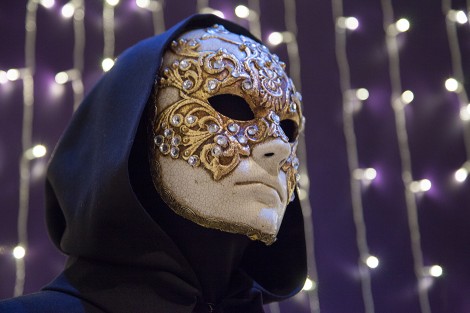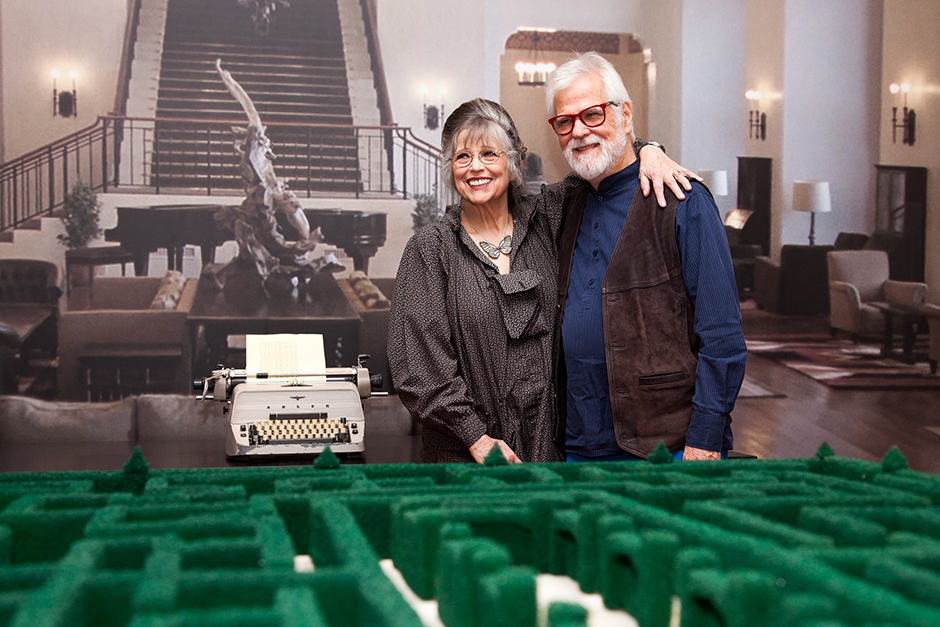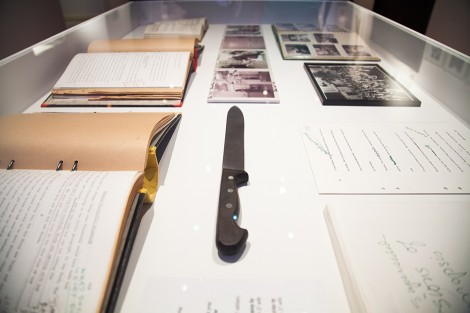Even for those who haven’t seen a Stanley Kubrick film, the exhibition currently showcasing his career at the TIFF Bell Lightbox is a must-see event. Running from October 31 to January 25, and curated by Jesse Wente, the Director of Film Programmes, the exhibit is a visually stunning exposé of Kubrick’s long career.
A student’s perspective
A rainy Halloween evening — the perfect setting for the opening night of the TIFF Lightbox’s Stanley Kubrick exhibition. As I stepped into the theatre a robotic voice welcomed me inside — those familiar with Kubrick’s film 2001: A Space Odyssey would immediately have recognized it as belonging to super-computer HAL 9000.
The exhibition itself is structured around Kubrick’s films, which are presented to the spectator in chronological order. Each area is dedicated to a separate film and recreates its particular ambience, including many iconic props, models, looping film clips, and haunting soundtrack music.
The organizers have tried to emphasize the interactive nature of the exhibit: you can take a mirror selfie with the spaceman suit from 2001: A Space Odyssey, for instance. During my visit, two women dressed up like the twin girls in The Shining appeared. They walked silently through the rooms side by side but stopped and stared while we photographed them. When we thanked them, they gravely replied: “Come play with us, Danny.”
The exhibition also includes correspondence, scripts, backstage pictures, notes, and artwork. The exhibition approaches Kubrick as an auteur, describing his particular ways of working and pointing out the overarching themes and patterns of his work.
As I completed the first-floor circuit, I was surprised to discover that there was more: as the exhibition continues on the fourth floor. I exited Kubrick’s little sphere and re-entered the real world. After a bit of searching, I finally arrived at the deserted-looking fourth floor, where the second part of the exhibition acts like its “bonus DVD.” It includes material from Kubrick’s unfinished projects like AI: Artificial Intelligence (which was eventually directed by Spielberg), as well as some beautiful posters from the films and Kubrick’s work as a photo reporter before he turned to directing.
This part of the exhibition is interesting, completing the picture of Kubrick as a perfectionist. However, it has none of the magic of the first part and makes for a rather anti-climactic end to the visit.
—Cristina Roca Phylactopoulou
Touring with the curator
I was lucky enough to interview Jesse Wente, its curator. The Kubrik exhibit itself has been travelling around for 10 years, only recently coming to Canada from Los Angeles. Wente described a number of differences in the TIFF version. Speaking specifically about the layout, he explains, “We chose to do it chronologically. In Los Angeles, they had done it thematically, but you can see his growth and evolution as an artist, I think better chronologically.”
 To do this, Wente and his team expertly designed specific rooms to look just as they did on set, such as the Overlook Hotel from The Shining or the space shuttle from 2001: A Space Odyssey. The most impressive detail was soundproofing the space shuttle room in an attempt to simulate the lack of sound in space.
To do this, Wente and his team expertly designed specific rooms to look just as they did on set, such as the Overlook Hotel from The Shining or the space shuttle from 2001: A Space Odyssey. The most impressive detail was soundproofing the space shuttle room in an attempt to simulate the lack of sound in space.
Not only did he curate the exhibit, but Wente also organized a section known as Perpetual Check, in which he created a compilation of clips from each film and organized them into a 20-minute viewing experience displaying the long and impressive career of Kubrick.
When asked about why people should come to see the exhibit, Wente says, “If you have ever seen a movie in your life, you should probably come see the exhibition — because if you’ve seen a science fiction film in the last 30 years, you’ve seen a movie influenced by Stanley Kubrick.”
—Alexander Fernandes



